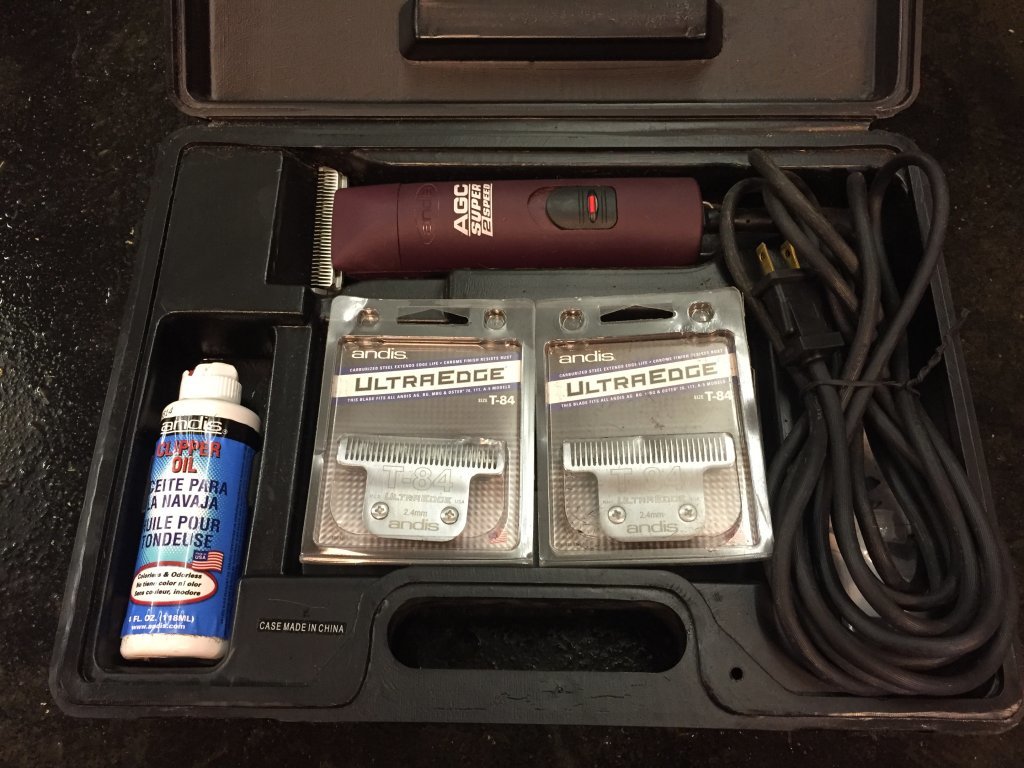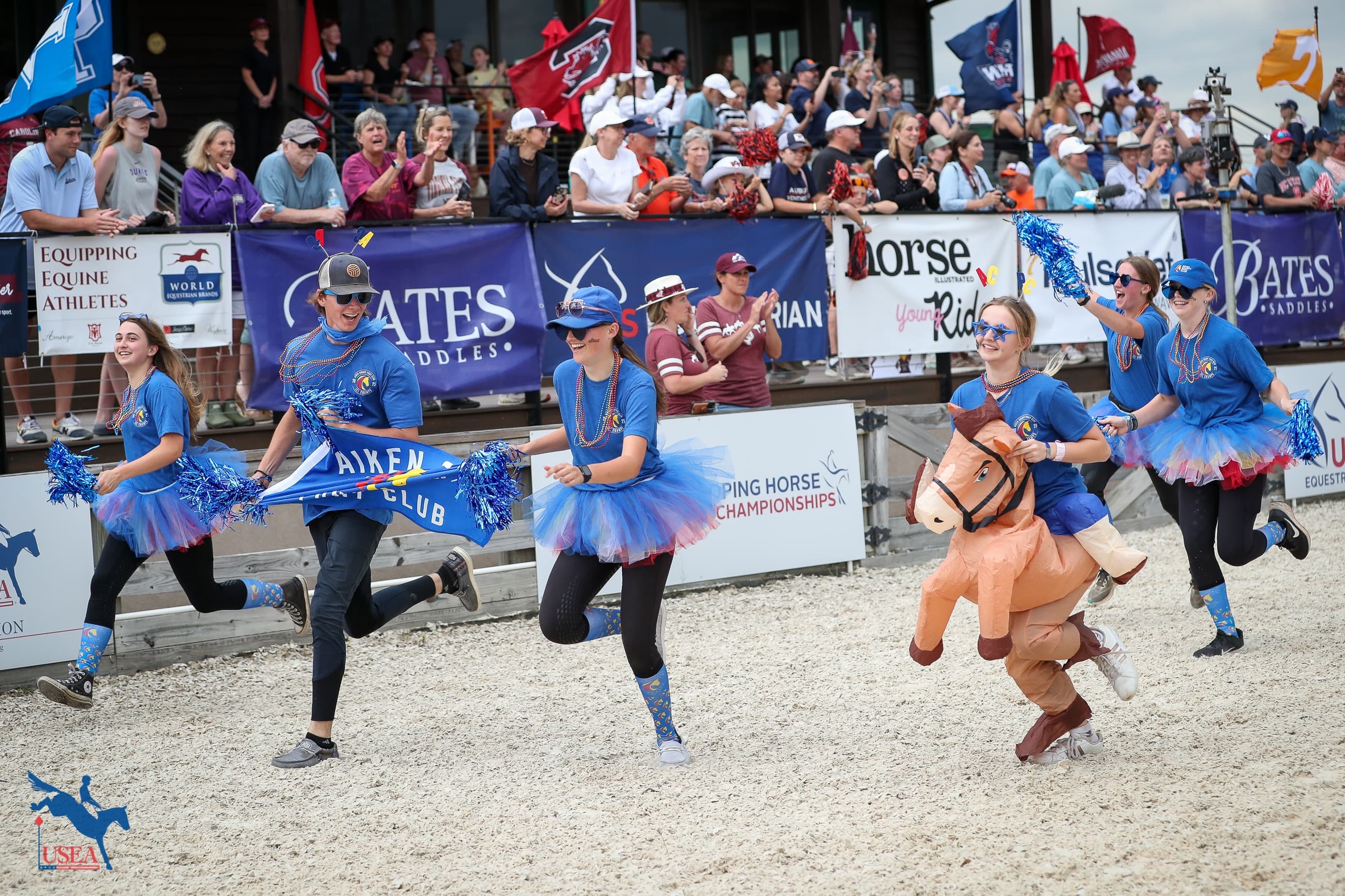Tips and Tricks of the Trade: Clipping with Cecily Clark

Tips and Tricks of the Trade is a new article series being provided through a partnership between Athletux and the USEA.
Important Points:
1. Start with a very clean horse
2. Have at least two sets of SHARP blades on hand
3. Be PATIENT with your horse
4. Wear rain gear to keep from wearing a hair shirt
5. Mind the cord!
7. Blanket appropriately
8. Clean up after yourself
9. Take care of your equipment after each clip
Tips and Tricks of the Trade: Clipping with Cecily Clark from USEA on Vimeo.
Winter is coming. Right now horse people may be reciting these ominous words as often and with just as much dread as the characters in Game of Thrones. Winter presents many challenges to those of us who have horses to take care of, and one of the biggest challenges we face in the winter months is keeping our horses comfortable in work with the varying winter temperatures. Most of us will opt for some kind of clip, whether it is a full body clip, a hunt clip, or a trace clip. A clipped horse is a practical necessity for anyone that plans on doing more than light riding with their horse over the winter, especially if you are limited to riding in the afternoon and evening hours due to school or work. So let’s talk about some tips to have a successful clipping experience for you and your horse, so you can spend a little less time cooling out your sweaty beast and more time on your winter riding homework!
There are so many options when it comes to clippers now. Pictured below. One thing to keep in mind is that the bigger clippers will help cut down your clipping time, but not all horses can tolerate the noise and vibration of the them. If you have a young or sensitive horse, using smaller, quieter clippers with wide blades might help you create a more positive experience for the horse.

Above is an example of a large clipper.

An example of smaller clippers.
First, you have to determine what type of clip you need. If you plan on showing your horse at all, you’ll have the most presentable horse if you go for a full body or a hunt clip. If your horse lives outside or spends time in turnout, I like to go for a hunt clip. A hunt clip leaves the horse a little protection from the cold and the mud by leaving the legs hairy. For horses prone to fungus on their legs, sometimes clipping them can help keep the legs cleaner, drier and easier to treat, and other times clipping can cause tiny nicks on the legs and open them up to bacteria, exacerbating a fungus or scratches issue. It helps to know the individual horse and which approach they do best with.
(Helpful hint: If I leave my horses legs hairy, I will usually trim the fetlock feathers and coronet band area by going WITH the hair on in a diagonal direction in order to give them a cleaner, more trimmed up look.)
For horses living out full time or not showing, a trace clip may be a good option. While trace clips take less time and leave the horse with more hair, they can often be harder to do because the lines will go across more cowlicked areas. There are many different trace
clip options, and I find now that neck covers are common on blankets, I prefer a trace that includes clipping the neck as that is usually one of the areas gets the most sweaty. There’s nothing worse than taking the time to clip your horse and then still spending hours cooling them down!
(Helpful hint: do your lines first, that way you don’t take a chunk of hair off that you meant to keep while you’re deep in the throws of clipping. For those that aren’t comfortable with free-handing your lines, get some chalk from the drug store and draw them on ahead of time. For a trace clip, look at your horse from the front and behind to make sure the lines on each side come close to matching up. If you’re going to leave a saddle patch, I put a half pad on their backs and use that to trace around.)
Once you’ve decided on the type of clip you’ll be doing, you’ll need to give your horse a thorough bath. Whenever I’m clipping a horse for someone, I always tell them to give “the best bath they’ve ever given”, because a dirt free horse makes that much of a difference. So, shampoo, scrub, rinse, and repeat, until the water coming off of your horse is dirt and residue free. Cover your horse with a scrim or cooler while they dry and then replace with a blanket until you clip so that your horse stays nice and clean.
(Helpful hint: pay special attention to the top of your horse’s bum and the crest of their neck when bathing, these areas tend to be the dirtiest, and almost always are the places that reveal who the mediocre bathers are)
Now that you know what type of clip you’re doing, and you have a clean, dry horse, it’s time to clip! The best place for clipping is usually a well-lit area that your horse is comfortable standing for an extended period of time in, and has a power source nearby.
(Helpful hint: If you are lacking good light, hardware stores sell clip on lamps for contractors and painters and can shed some light on your clipping project. Wearing a head lamp can help eliminate shadows or glare caused by overhead or side lighting.)
In my mind, the most important goal when clipping has to be creating a positive experience for your horse by being patient with them. Take your time to introduce your horse to the clippers by turning them on while standing next to them and stroking them with your free hand. If your horse is un-phased by that, then stroke your horse with the clippers. If that is all drama and stress free, then go to clipping, keeping in mind most horses are more sensitive along their flanks, stifle area, elbows, poll and face. Take time in those areas and start by rubbing your hand there first so as to let them know you’ll be touching them there. I will never clip a horse’s face or ears unless they can remain calm. I personally don’t use a twitch or stud chain, rather I work on getting my horse to yield to pressure on his poll from my hand or the halter. That way, when I’m clipping and my horse gets nervous, I can just ask him to put his head down. If I can’t clip my horse with his head at or below the level of my shoulders then I either won’t clip his face, will take extra time over the course of a few days or weeks to get my horse to reliably put his head down with the clippers running nearby and then graduate to being able to run the clippers all over his head while he keeps it lowered before I graduate to actually clipping his face, or I will have my vet sedate him or leave me with some dormosodan gel. In my experience, fighting with your horse usually makes them fight back, and no clip is ever worth that.
Always keep yourself safe. Horses are far more likely to kick, bite, stomp, push in to you, throw their heads, etc., while being clipped. Even well behaved and gentle horses can get surprised by a tickle and react to it. An aggressive horse has actually never kicked me, it’s always the gentle ones that get you by accident when they’re stomping at a fly or a tickle from the clippers.
You’ll want to have two or more sets of sharp clipper blades so that you can switch them out when the set you’re using gets warm. Be sure to oil your blades at least every 15 minutes of clipping, and wipe down with a rag after oiling so you don’t get the oil on your horses skin. Helpful hint: check the temperature of the blades periodically with your hand to be sure you’re not driving your horse crazy with blades that are hot to the touch.
Now that you’re clipping, you’ll want to take smooth strokes against the hair, using an even and constant pressure. I usually do two passes on each side, the first pass just focusing on getting all of the hair off, and the second pass focusing on getting rid of lines. In order to get rid of any lines left by the clippers, clip sideways to the line you’re trying to get rid of, almost in a cross-hatch pattern. Helpful hint: when clipping along the mane, make sure you leave at least an inch of space between the mane and the edge of your clipper blades. Nothing makes a mane stand on end or ruins a good braiding job like mane that was accidently clipped off over the winter.
Once you’re done with the clip, brush your horse off well, and if possible give him the chance to have a good roll. If your horse has sensitive skin, give him a bath with a soothing oatmeal or baby shampoo (one that you’ve already tested on your horse to know he won’t react to any of the ingredients).
Now that your horse is clipped, remember that he will not be able to regulate his temperature the way he would with a full winter coat, so be aware of how you’re blanketing him. When it’s cold out, be sure he’s blanketed well enough to stay warm. If it warms up during the day, have a lighter-weight blanket to switch him in to so he doesn’t overheat. Get to know if your horse runs hot or cold and blanket based on that and not just the thermostat.
And remember, winter is coming!
Cecily began riding at the age of 6 under the guidance of Sue Riggs, Diana Field, and later, Audrey Goldsmith. Dedicated coaching and countless hours spent in two point and without stirrups helped her to achieve success in the Hunter and Equitation ranks in Northern California and Oregon. She credits her mount, Alley Cat, purchased when Cecily was 11, as one of her greatest teachers. He was an experienced horse, with opinions tempered by a kind heart, and when Cecily rode well he rewarded her with brilliant performances, but when she did not, she often ended up dangling from his neck. Cecily took a break from serious riding to earn her B.A. in History at Dominican University, but upon graduating Cum Laude, she put that education to good use by joining Matt in establishing East West Training Stables in 2003. Throughout her years spent in the saddle and at the barn, Cecily has been grateful for the opportunities to learn from many talented horseman, including Siri Larssen, Suzie Hutchison, Beth Perkins, Elizabeth Clarke and Pierre Cousyn. Since starting East West Training Stables, Cecily's focus has shifted from Hunters and Equitation to Dressage. She has brought her own horse, Ringwood Galaxy, through the levels to Prix St. Georges, and credits both Matt and Volker Brommann for the success that she and Galaxy have been able to achieve. Cecily is also an avid photographer and is the person behind the lens at the horseshows, capturing the East West team in all of their glory!
Cecily Clark is married to Matt Brown and plays an integral role in running and maintaining their training business, East West Training Stables, in Pennsylvania.
Photos and video courtesy of Cecily Clark














